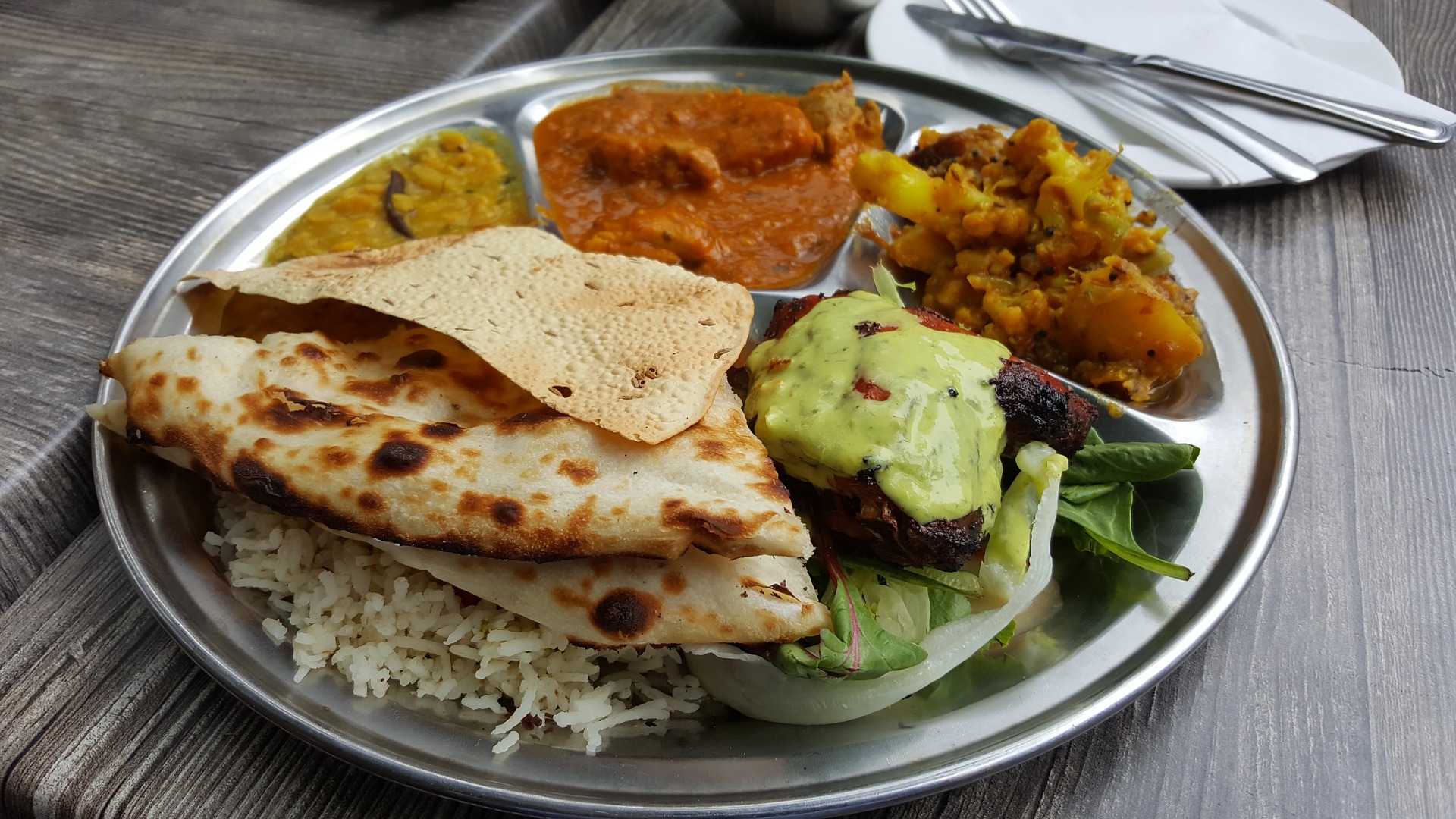
Interesting Facts About Indian Cuisine
You might not be aware of this but the Indian dishes you have come to love might not be very Indian at all.
Did You Know That…
The dish which made the Indian cuisine famous around the world like Chicken Tikka Masala originated in Scotland.
Samosa was a middle eastern food called “Sambosa” a long time before it came to India.
Naan bread had Persian origins and was brought to India by Mughals.
As India was a major trading hub in the past, the cuisine has been influenced by the Middle East, Europe, Portugal etc.
Even the most used spice in Indian cuisine, chilli, was originally introduced by the Portuguese.
Vegetarian Options of India Food
Although most of the Indian dishes we love and enjoy contain meat, about 40% of Indians are vegetarian.
Furthermore, India has the lowest meat consumption per person.
That’s why you might have noticed that there are usually a few vegetarian options on every Indian menu.
Also, it is forbidden to eat beef in India as cows are regarded as sacred.
This seems odd that Indian restaurants would offer beef as an option but they do, outside of India.
Indian cuisine is about more than eating.
Indians believe that different foods are eaten to obtain different health benefits and this is often reflected in the various dishes available.
It is believed, in India that every illness and every cure is found in what food you put into your body.
The important six
Traditional Indian food should cover six, distinct flavours;
- Spicy
- Sweet
- Bitter
- Salty
- Astringent
- Sour
If your traditional Indian feast doesn’t cover these different tastes, it isn’t considered complete.
Indian food is considered spicy for people from most other countries, this comes as no surprise because India produces 70% of the world’s spices.
Diversity
Indian cuisine is a mixture of a few different elements.
Many influences from around the world have shaped Indian food over centuries and even millennia.
Being the primary source of the world’s spices and cultural diversity has made Indian cuisine what it is today, a vast melting pot of different flavours and ingredients from all over the world.
Even the method for extracting sugar from sugar cane juice was first developed in India although, sugar cane was also introduced to India by the Portuguese.
History
India has a very rich history and was mainly concerned with trade for a large portion of the 19th century.
India was considered a hub for trade over many years and it is because of this reason that many other cultures brought their culinary influence into the country.
Hence, Indian cuisine has developed over centuries and usually includes many spices and flavours.
So the next time you decide on getting Indian food for dinner, give some thought to all the different flavours and influences that have gone into your meal over the years.
You are tasting a piece of history.
Also, try to distinguish between the six different flavours mentioned above and judge your meal on that basis.
Are you inspired to make your very own Indian dishes?
Why not learn to make some delicious Indian dishes and be taught by industry-leading chefs by enrolling in our Indian Cooking Class?
